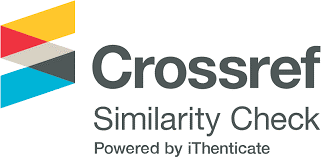Proposta de uma Nova Estratégia Ativa de Anti-Ilhamento Baseada em Realimentação Positiva de Frequência
DOI:
https://doi.org/10.18618/REP.2021.3.0007Keywords:
Anti-ilhamento, Desvio de Frequência, Sistemas fotovoltaicos conectados à rede de CA, Zona de não detecçãoAbstract
O fenômeno do ilhamento ocorre quando um Sistema de Geração distribuída permanece energizado após a interrupção da rede da concessionária. A ocorrência de ilhamento não intencional pode acarretar em diversos problemas relacionados à segurança dos usuários e operadores do sistema elétrico e perda da qualidade de energia elétrica. Nesse contexto, o presente trabalho apresenta um novo método ativo de Proteção Anti-Ilhamento (PAI) com realimentação positiva de frequência. Para atestar a efetividade da estratégia, será realizado um estudo comparativo entre o algoritmo proposto e outras técnicas conhecidas na literatura: Active Frequency Drift (AFD), Sandia Frequency Shift (SFS) e uma variante do AFD proposta em 2013. Os ensaios experimentais serão realizados empregando um inversor CC-CA de 1 kW, a rede da concessionária e uma carga RLC, projetada segundo as recomendações da norma ABNT NBR 62116. Os resultados obtidos comprovarão que a técnica proposta apresenta uma redução da Zona de Não de Detecção, do tempo de detecção do ilhamento e do conteúdo harmônico inserido na corrente de saída do inversor.
Downloads
References
[ 1]ABNT NBR Procedimentos de ensaio de anti-ilhamento para inversores de sistemas fotovoltaicos conectados à rede elétrica. ABNT NBR IEC 62116, Mar. 2012.
[ 2]IEEE Recommended Practice for Utility Interface of Photovoltaic (PV) Systems. IEEE Std. 929-2000, Jan. 2000, https://doi.org/10.1109/IEEESTD.2000.91304 DOI: https://doi.org/10.1109/IEEESTD.2000.91304
[ 3]IEEEStandard for Interconnecting Distributed Resources with Electric Power Systems, IEEE. Std
[ 4]ABNT NBRSistemas Fotovoltaicos (FV) - Características da Interface de Conexão com a Rede Elétrica de Distribuição, ABNT NBR 16149, Mar. 2013.
[ 5]M. Suman, M. Kirthiga, Distributed Energy Resources in Microgrids, Academic Press, 1a Edição, Nova Iorque, 2019, doi: 10.1016/C2018-0- 02714-0.
[ 6]M. Kim, et al., "Comprehensive Review of Islanding Detection Methods for Distributed Generation Systems", in Energies, v. 12, nº 3, Mar. 2019, https://doi.org/10.3390/en12050837 DOI: https://doi.org/10.3390/en12050837
[ 7]M. A. G. Brito, M. G. Alves, L. P. Sampaio, C. A. Canesin, "Estratégias de anti-ilhamento aplicadas a sistemas de geração distribuída fotovoltaica", Eletrônica de Potência, v. 23, nº 3, Jun. 2018, https://doi.org/10.18618/REP.2018.2.2773 DOI: https://doi.org/10.18618/REP.2018.2.2773
[ 8]K. N. E. K. Ahmad et al., "An effective passive islanding detection method for PV single-phase grid-connected inverter", in Solar Energy, vol. 97, pp. 155-167, Nov.2013, https://doi.org/10.1016/j.solener.2013.08.011 DOI: https://doi.org/10.1016/j.solener.2013.08.011
[ 9]A. G. Abokhalil, A. B. Awan, A. R. A. Qawasmi,"Comparative Study of Passive and Active Islanding Detection Methods for PV Grid-Connected Systems", in Susteninability, vol. 10, nº 1, Mai. 2018, https://doi.org/10.3390/su10061798 DOI: https://doi.org/10.3390/su10061798
[ 10]S. Hu, H. Tsai, T. Lee, "Islanding detection method based on second-order harmonic injection for voltage-controlled inverter", in 2015 IEEE 2nd International Future Energy Electronics Conference (IFEEC), Fev. 2015, https://doi.org/10.1109/IFEEC.2015.7361564 DOI: https://doi.org/10.1109/IFEEC.2015.7361564
[ 11]M. Khodaparastan et al. "A Novel Hybrid Islanding Detection Method for Inverter-Based DGs Using SFS and ROCOF", in IEEE Transactions on Power Delivery, vo l. 32, nº 5, pp. 2162-2170, Fev. 2017, https://doi.org/10.1109/TPWRD.2015.2406577 DOI: https://doi.org/10.1109/TPWRD.2015.2406577
[ 12]P. Gupta, R. S. Bhat ia, D. K. Jain, "Active ROCOF Relay for Islanding Detection",in IEEE Transactions on Power Delivery, vol. 32, nº 1, pp. 420-429, Jun. 2016, https://doi.org/10.1109/TPWRD.2016.2540723 DOI: https://doi.org/10.1109/TPWRD.2016.2540723
[ 13]F. Mango et al., "Overview of Anti-Islanding Algorithms for PV Systems. Part I: Passive Methods",in 12th International Power Electronics and Motion Control Conference, pp. 1878-1883,Set.2006, https://doi.org/10.1109/EPEPEMC.2006.4778679 DOI: https://doi.org/10.1109/EPEPEMC.2006.283133
[ 14]R. Teodorescu, M. Liserre, P. Rodriguez, Grid Converters for Photovoltaic and Wind Power Systems, Wiley-IEEE Press, 2a Edição, Nova Iorque, Fev. 2011. https://doi.org/10.1002/9780470667057 DOI: https://doi.org/10.1002/9780470667057
[ 15]M. E. Ropp, M. Begovic, A. Rohatgi,"Analysis and performance assessment of the active frequency drift method of islanding prevention" in IEEE Transactions on Energy Conversion, vol. 14, nº 3, pp. 810-816, Set.1999, https://doi.org/10.1109/60.790956 DOI: https://doi.org/10.1109/60.790956
[ 16]M. A. Hosani, Z. Qu, H. H. Zeineldin,"Scheduled Perturbation to Reduce Non detection Zone for Low Gain Sandia Frequency Shift Method", in IEEE Transactions on Smart Grid, vol. 6, nº 6, Mai. 2015, https://doi.org/10.1109/TSG.2015.2423554 DOI: https://doi.org/10.1109/TSG.2015.2423554
[ 17]Y. Gao and J. Ye, "Improved Slip Mode Frequency-Shift Islanding Detection Method", in 2019 International Conference on Virtual Reality and Intelligent Systems (ICVRIS), pp. 152-155, Set.2019, https://doi.org/10.1109/ICVRIS.2019.00045 DOI: https://doi.org/10.1109/ICVRIS.2019.00045
[ 18]Y. Jung et al., "A Novel Active Frequency Drift Method of Islanding Prevention for the grid-connected Photovoltaic Inverter", in 2005 IEEE 36th Power Electronics Specialists Conference, Recife, Jun. 2005, https://doi.org/10.1109/PESC.2005.1581893 DOI: https://doi.org/10.1109/PESC.2005.1581893
[ 19]H. Vahedi and M. Karrari, "Adaptive Fuzzy Sandia Frequency-Shift Method for Islanding Protection of Inverter-Based Distributed Generation," inIEEE Transactions on Power Delivery, vol. 28, nº 1, pp. 84-92, Jan. 2013, https://doi.org/10.1109/TPWRD.2012.2219628 DOI: https://doi.org/10.1109/TPWRD.2012.2219628
[ 20]H. H. Zeineldin, M. M. A. Salama, "Impact of Load Frequency Dependence on the NDZ and Performance of the SFS Islanding Detection Method," inIEEE Transactions on Industrial Electronics, vol. 58, nº 1, pp. 139-146, Jan. 2011, https://doi.org/10.1109/TIE.2009.2033482 DOI: https://doi.org/10.1109/TIE.2009.2033482
[ 21]Ê. Resende et al., " A Performance Analysis of Active Anti-Islanding Methods Based on Frequency Drift" in IEEE 15th Brazilian Power Electronics Conference and 5th IEEE Southern Power Electronics Conference, Santos, Brasil, pp. 1-6, Nov.2019, https://doi.org/10.1109/COBEP/SPEC44138.2019.9065377 DOI: https://doi.org/10.1109/COBEP/SPEC44138.2019.9065377
[ 22]W. Chen et al., "An improved active frequency drift islanding detection method with lower total harmonic distortion", in 2013 IEEE Energy Conversion Congress and Exposition, pp. 5248-5252, Out. 2013, https://doi.org/10.1109/ECCE.2013.6647411 DOI: https://doi.org/10.1109/ECCE.2013.6647411
[ 23]R. Messenger,A. Abtahi,Photovoltaic System Engineering, CRC Press, 4a Edição, Mar. 2017. https://doi.org/10.1201/9781315218397 DOI: https://doi.org/10.1201/9781315218397
[ 24]H. T. Silva, Estudo sobre a interação de métodos de anti-ilhamento para sistemas fotovoltaicos conectados à rede de distribuição de baixa tensão com múltiplos inversores. Dissertação de Mestrado, Universidade de Campinas, Unicamp, Brasil,Mar.2016, https://doi.org/10.11606/D.3.2016.tde-28062016-151006 DOI: https://doi.org/10.11606/D.3.2016.tde-28062016-151006
[ 25]M. E. Ropp et al., "Determining the relative effectiveness of islanding detection methods using phase criteria and non-detection zones",in IEEE Transactions on Energy Conversion, v. 15, nº 3, pp. 290-296, Set.2000, https://doi.org/10.1109/60.875495 DOI: https://doi.org/10.1109/60.875495
[ 26]L. A. C. Lopes, H. Sun, "Performance assessment of active frequency drifting islanding detection methods",IEEE Transactions on Energy Conversion, v. 21, nº 1, pp. 171-180, Mar. 2006, https://doi.org/10.1109/TEC.2005.859981 DOI: https://doi.org/10.1109/TEC.2005.859981
[ 27]F. Liu, Y. Kang, S. Duan, "Analysis and optimization of active frequency drift islanding detection method" inAPEC 07 - Twenty Second Annual IEEE Applied Power Electronics Conference and Exposition, USA, Mai.2007, https://doi.org/10.1109/APEX.2007.357696 DOI: https://doi.org/10.1109/APEX.2007.357696
[ 28]Ê. C. Resende et al., "Co mputational Implementation of Different Anti-Islanding Techniques Based on Frequency Drift for Distributed Generation Systems", in 2019 IEEE PES Innovative Smart Grid Technologies Conference - Latin America, Gramado, Brasil, Nov.2019, https://doi.org/10.1109/ISGT-LA.2019.8895430 DOI: https://doi.org/10.1109/ISGT-LA.2019.8895430
[ 29]Y. Hong, W. Huang, "Investigation of Frequency drift methods of Islanding Detection with multiple PV inverters", in 2014 International Power Electronics and Application Conference and Exposition, Shanghai, pp. 429-434, Fev. 2014, https://doi.org/10.1109/PEAC.2014.7037894 DOI: https://doi.org/10.1109/PEAC.2014.7037894
[ 30]X. Wang, W. Freitas,"Impact of Positive-Feedback Anti-Islanding Methods on Small-Signal Stability of Inverter-Based Distributed Generation",IEEE Transactions on Energy Conversion, v. 23, nº 3, Jul. 2008, https://doi.org/10.1109/TEC.2008.926066 DOI: https://doi.org/10.1109/TEC.2008.926066
[ 31]H. H. Zeineldin, S. Kennedy,"Sandia Frequency-Shift Parameter Selection to Eliminate Non detection Zones",IEEE Transactions on Power Delivery, v. 24, nº 1, p. 486-487, Jan. 2009, https://doi.org/10.1109/TPWRD.2008.2005362 DOI: https://doi.org/10.1109/TPWRD.2008.2005362
[ 32]A. Y. Hatata, El-H. Abd-Raboh, Bishoy E. Sedhom, "Proposed Sandia frequency shift for anti-islanding detection method based on artificial immune system", Alexandria Engineering Journal, Volume 57, nº 1, 2018, Pages 235-245,Mar. 2018, https://doi.org/10.1109/TPWRD.2015.2391193 DOI: https://doi.org/10.1016/j.aej.2016.12.020
[ 33]H. Vahedi, M. Karrari, G. B. Gharehpetian, "Accurate SFS Parameter Design Criterion for Inverter-Based Distributed Generation"IEEE Transactions on Power Delivery, vol. 31, nº 3, pp. 1050-1059, Jun. 2016, https://doi.org/10.1109/TPWRD.2015.2391193 DOI: https://doi.org/10.1109/TPWRD.2015.2391193
[ 34]F. C. Melo,Projeto e desenvolvimento de um novo inversor solar de estágio único sem transformador adequado para aplicações de baixa potência. Tese de Doutorado,Universidade Federal de Uberlândia, Uberlândia, Out. 2017, https://doi.org/10.14393/ufu.te.2017.11 DOI: https://doi.org/10.14393/ufu.te.2017.11
[ 35]M. E. T. Souza, Ê. C. Resende, F. C. Melo, G. B. Lima, L. C. G. de Freitas, "Computational Implementation and Comparative Analysis of Phase-Locked Loop (PLL) Methods Under Different Power Quality Disturbances",in2019 IEEE PES Innovative Smart Grid Technologies Conference - Latin America, pp. 1-6, Sep. 2019, https://doi.org/10.1109/ISGT-LA.2019.8894920 DOI: https://doi.org/10.1109/ISGT-LA.2019.8894920
[ 36]H. Cha, T. Vu, J. Kim,"Design and control of Proportional-Resonant controller based Photovoltaic power conditioning system",in IEEE Energy Conversion Congress and Exposition, San Jose, CA, pp. 2198-2205, Nov. 2009, https://doi.org/10.1109/ECCE.2009.5316374 DOI: https://doi.org/10.1109/ECCE.2009.5316374
Downloads
Published
How to Cite
Issue
Section
License
Copyright (c) 2021 Revista Eletrônica de Potência

This work is licensed under a Creative Commons Attribution 4.0 International License.















